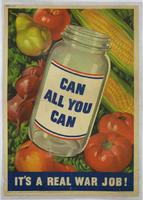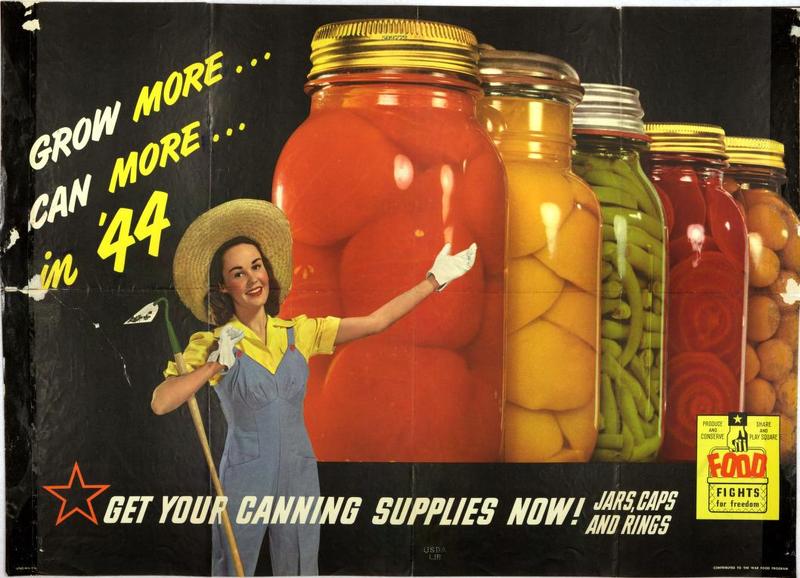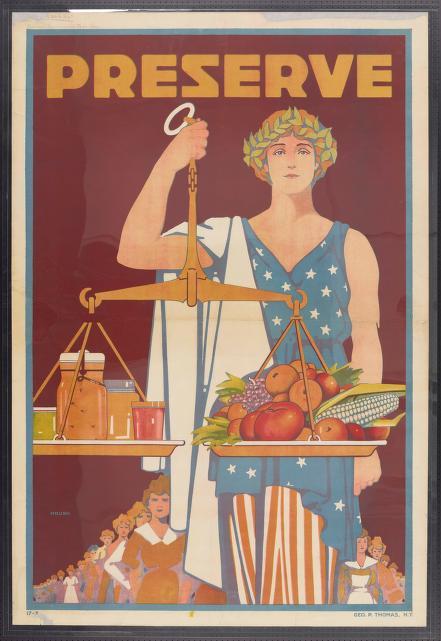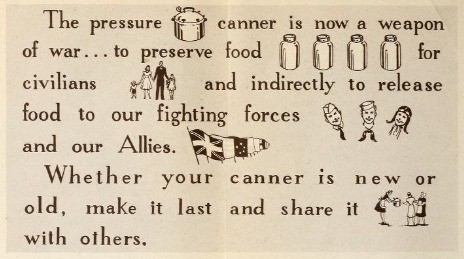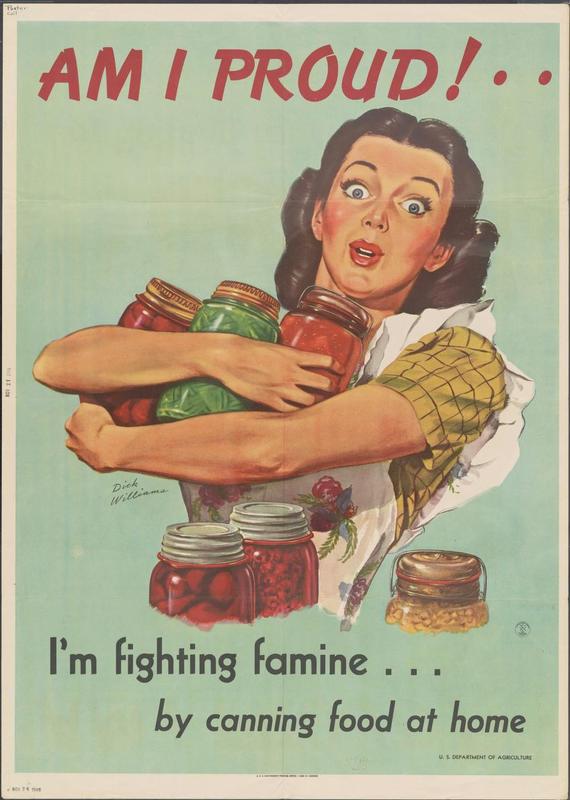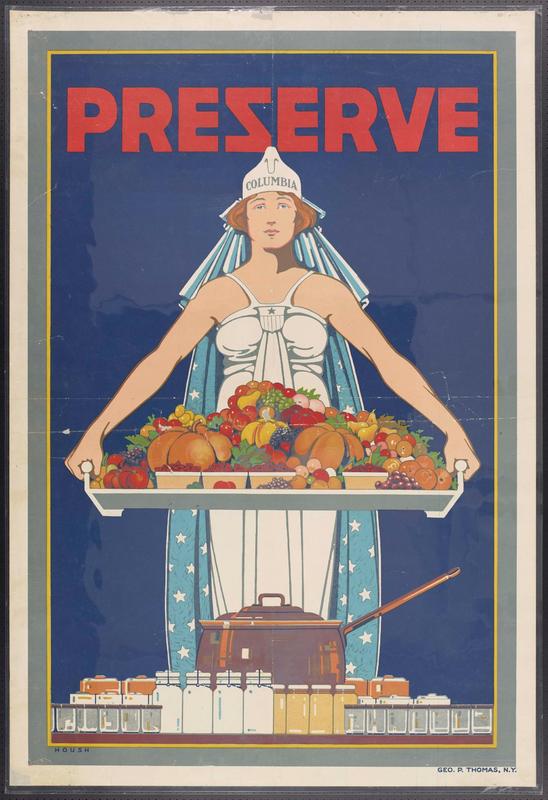World War II
Home canning soared during World War II, reaching its peak in 1943, with over 4.1 billion jars canned in homes and community canning centers (Bentley, 1998). Wartime canning and victory gardens were symbols of patriotism and heavily promoted by the government.
Home canning during World War II offered families on the home-front a way to supplement their food supplies when rationing was in effect. As an import, sugar, a home canning staple, was among the rationed items.
Sugar suppliers today are feeling the real pinch of a long year. Last year civilians used 6,100,000tons (including industrial use)….about 700,000 tons more than we could afford. This year if we are to live within our quota of 5,400,000 tons….and if each American family is to be assured of a fair share of that quota, tighter rationing is necessary.
--United States Department of Agriculture & War Food Administration. (1945). The facts about home food preservation in 1945. Retrieved from https://archive.org/details/CAT31071164
A standard sugar ration was 5 pounds, but individuals who home canned could submit requests to their local rationing boards for up to 20 extra pounds of sugar expressly for canning, provided the applicant outline in detail their proposed canning plan (Question box, 1944).
Pressure canners were also rationed during the first years of the war due to their aluminum construction. As a result, sharing pressure canners with friends and family or utilizing community canning centers grew. The risk of malfunction also grew, however and women were advised to “use extreme care” when using pressure canners. Also, everyone should thoroughly clean and inspect canners before use and not leave pressure canners unattended while in use to prevent overheating and avoid explosions (Urges caution, 1943).
[W]atch out, community canners, don’t push these small steam pressure outfits too hard. We’re going to need them longer than just the summer. They’re built to handle about 300 or 400 jars a year at the most.
--United States Department of Agriculture. (1943). Community canning: Princeton, New Jersey, Way. Retrieved from https://archive.org/details/CAT31312233
Pressure canners were necessary for canning low-acid foods, however and the USDA put pressure on the War Production Board to ease restrictions on pressure canner production.
Pressure canners are essential to can vegetables other than tomatoes. Manufacture of 630,000 has been authorized for 1945, compared to 40,000 in 1944. This year’s canners will not be rationed and will be available through regular commercial channels.
--United States Department of Agriculture & War Food Administration. (1945). The facts about home food preservation in 1945. Retrieved from https://archive.org/details/CAT31071164
Rationing restrictions were lifted mid-1944 and significantly less emphasis was put on victory gardening and home canning by the government (Bentley, 1998). Food shortages towards the end of 1944, however necessitated a renewed effort by the government to support victory gardens and home canning, but participation never reached that of 1943 (Bentley, 1998).
 An official website of the United States government.
An official website of the United States government.


